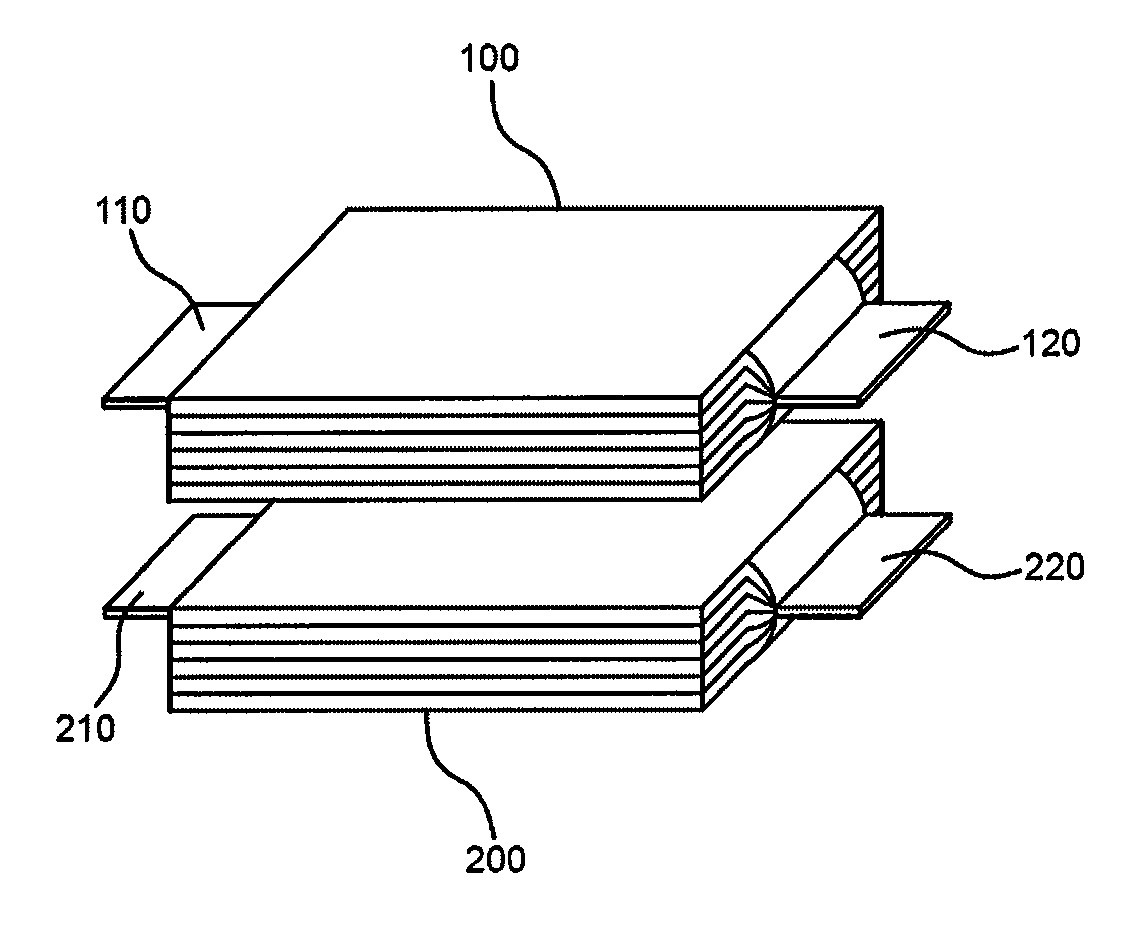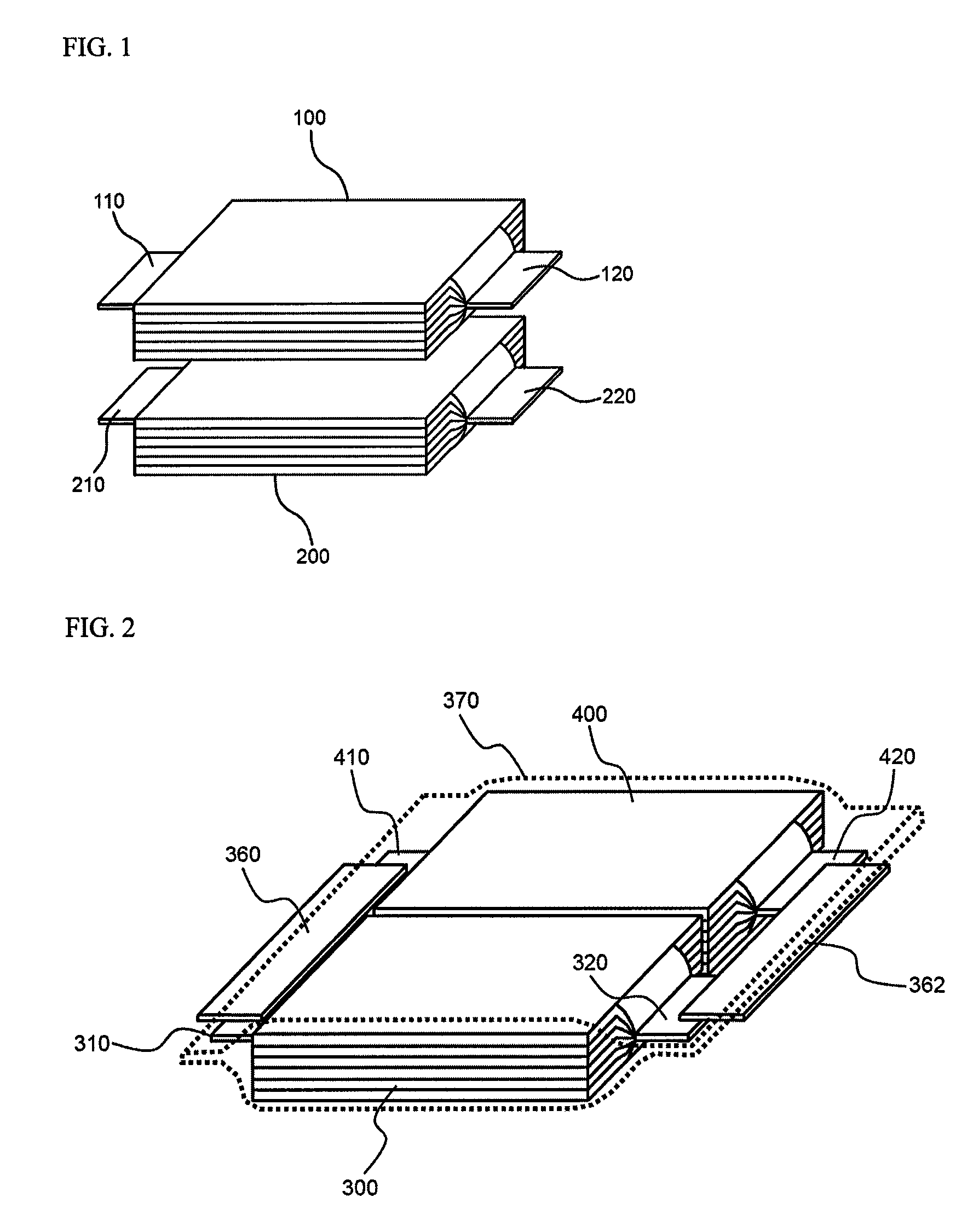High Capacity Battery Cell Employed with Two or More Unit Cells
a battery cell and high capacity technology, applied in the direction of cell components, flat cell grouping, sustainable manufacturing/processing, etc., can solve the problems of low utilizability, complicated and troublesome electrode assembly, and unsuitable jelly roll electrode assembly, so as to improve the structural stability of the secondary battery against external environments such as impacts and vibrations, and the treatment of the unit cell is easy and convenient.
- Summary
- Abstract
- Description
- Claims
- Application Information
AI Technical Summary
Benefits of technology
Problems solved by technology
Method used
Image
Examples
Embodiment Construction
[0045]Now, preferred embodiments of the present invention will be described in detail with reference to the accompanying drawings. It should be noted, however, that the scope of the present invention is not limited by the illustrated embodiments.
[0046]FIG. 1 is a perspective view typically illustrating a stacking arrangement type parallel connection structure of unit cells constituting a secondary battery according to a preferred embodiment of the present invention.
[0047]Referring to FIG. 1, unit cells (a first unit cell and a second unit cell) 100 and 200 are constructed in a structure in which a plurality of bicells having a stacking structure having identical electrodes at opposite sides thereof are folded while a separator sheet is disposed between the bicells. The structure of the bicells is illustrated in more detail in FIG. 4.
[0048]Referring to FIG. 4, the first unit cell 100 is constructed in a structure in which bicells 150 and 152 having a cathode / separator / anode / separator...
PUM
 Login to View More
Login to View More Abstract
Description
Claims
Application Information
 Login to View More
Login to View More - R&D
- Intellectual Property
- Life Sciences
- Materials
- Tech Scout
- Unparalleled Data Quality
- Higher Quality Content
- 60% Fewer Hallucinations
Browse by: Latest US Patents, China's latest patents, Technical Efficacy Thesaurus, Application Domain, Technology Topic, Popular Technical Reports.
© 2025 PatSnap. All rights reserved.Legal|Privacy policy|Modern Slavery Act Transparency Statement|Sitemap|About US| Contact US: help@patsnap.com



